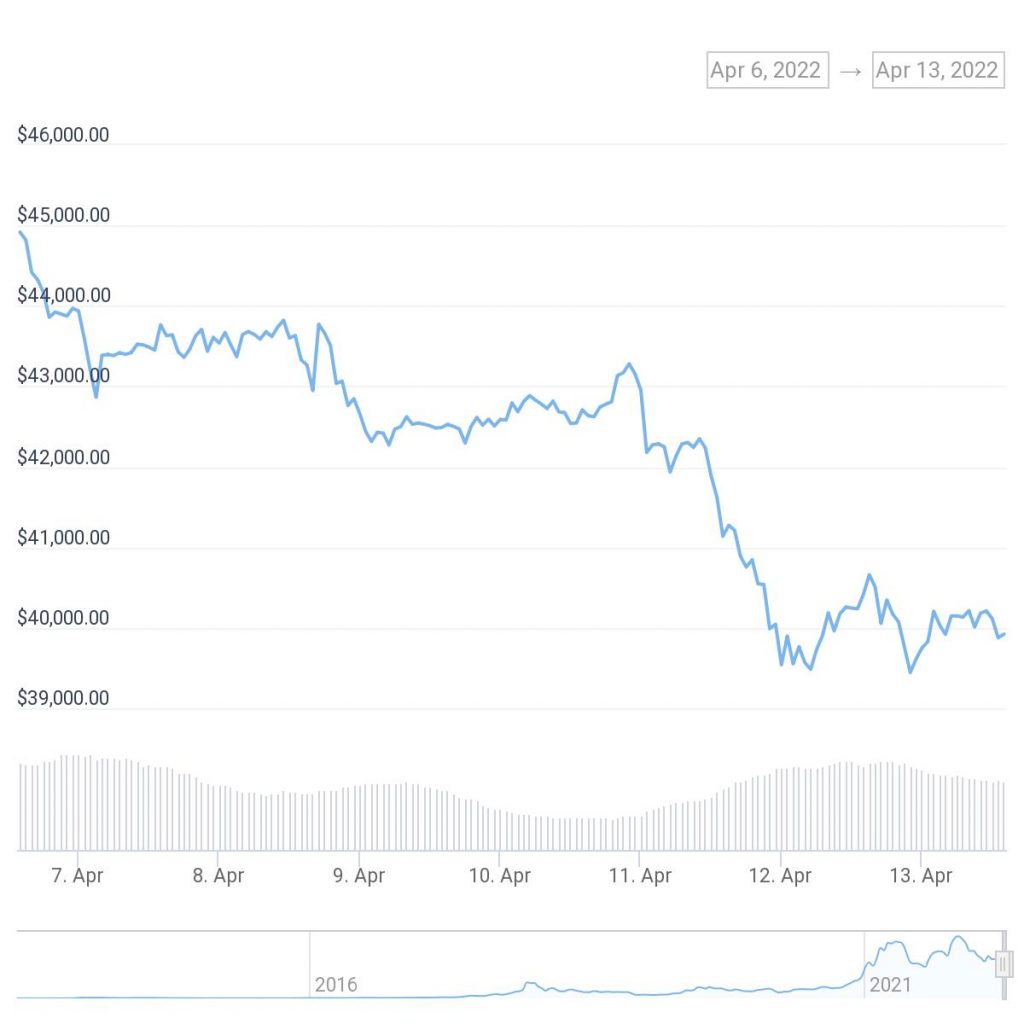James Atkins
Editor


While the cryptocurrency has seen a drop of around 30% in the last week.
Data suggests that Bitcoin investors are attempting to protect themselves against inflation in fiat currencies, especially in the US.
Bitcoin has often been referred to as a hedge against inflation, and the US dollar experiencing unprecedented levels of inflation.
It’s no wonder that Bitcoin investors in the US are looking to cryptocurrency as a way to protect their money.
On April 12, Bitcoin rose rapidly, as seen in the Trading chart below.

According to the US Bureau of Labor Statistics.
The Consumer Price Index rose by 8.5% year over year in March, driven by a staggering 1.2% increase that month alone.
The swift rise suggests that there is significant inflationary pressure throughout the United States economy.
The Federal Reserve has struggled to control inflation, and the Fed has come under fire from both cryptocurrency analysts and conventional financial experts.
According to Professor Steve Hanke, a trading economist who believes in the free market.
This sort of CPI increase is typical in countries with severely underdeveloped economies like Zimbabwe and Venezuela.
According to Henke, “central banks have failed us.”
And it may be time to explore an alternative asset class, such as cryptocurrency, to avoid the severe inflation spikes.

While the CPI’s credibility has been challenged, the S&P 500 market has remained steady.
Following a bearish few months after the global tension with the Russian-Ukraine war and continuing concern over the worldwide pandemic.
Bitcoin’s ties to the technology industry are becoming increasingly closer, with bitcoin’s price fluctuations and rises tracking tech stock gains and losses.
In a recent interview, Bitcoin bull and MicroStrategy CEO Tim Klein said that while price increases worrisome, it’s not as bad as many people think.
According to Mr. Taylor, Bitcoin is faring significantly better than the perception might suggest when compared to inflation.
According to Taylor:
“I think Bitcoin is holding up quite well in the face of what is a massive increase in the money supply,” he said.
“The Fed is doing quantitative easing to the tune of $120 billion a month. That’s 10% of the market cap of Bitcoin that they’re printing every single month.
To me, Bitcoin looks like it’s holding its own against inflation, and I think as we see inflation start to pick up in the economy.
Which I think we will see later this year and into next year, I think that bodes well for Bitcoin as a store of value.”
The stock-to-Bitcoin correlation is not ideal for the market.
But the relative strength indices (RSI) of both Bitcoin and other cryptocurrencies suggest that the crypto sector will soon recover.
According to Bitcoin analyst BTCfuel, if previous trades are anything to go by, the RSI now suggests a strong bullish trend.
Looking at the top cryptocurrency trends over the previous seven days.
We see where Bitcoin’s CPI-driven surge drove it from $39,400 to above $40,200.
While prices have dropped somewhat since then, market sentiment remains optimistic, suggesting that a continuous increase in bitcoin is possible.
With the US inflation rate reaching its highest level since 2008.
Several investors are turning to Bitcoin as a hedge against inflation.
Bitcoin is often seen as a store of value, similar to gold, that can be used to preserve wealth in the face of inflation.
Thus from all indications, despite the cryptocurrency drop of around 30% in the last week.
Available data indicates strongly that Bitcoin investors in the US are attempting to protect themselves against inflation in fiat currencies.
